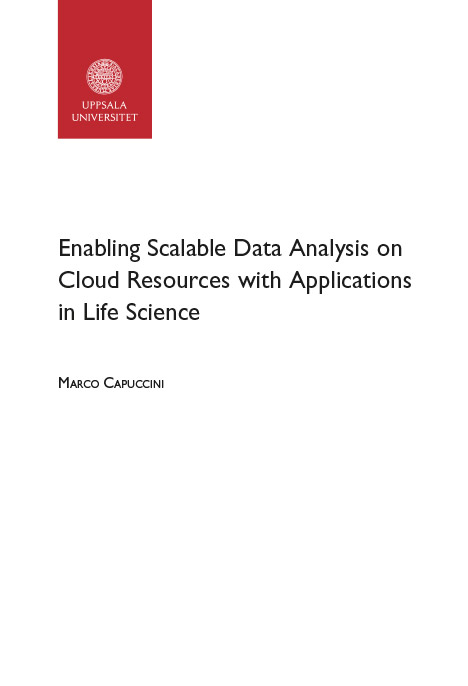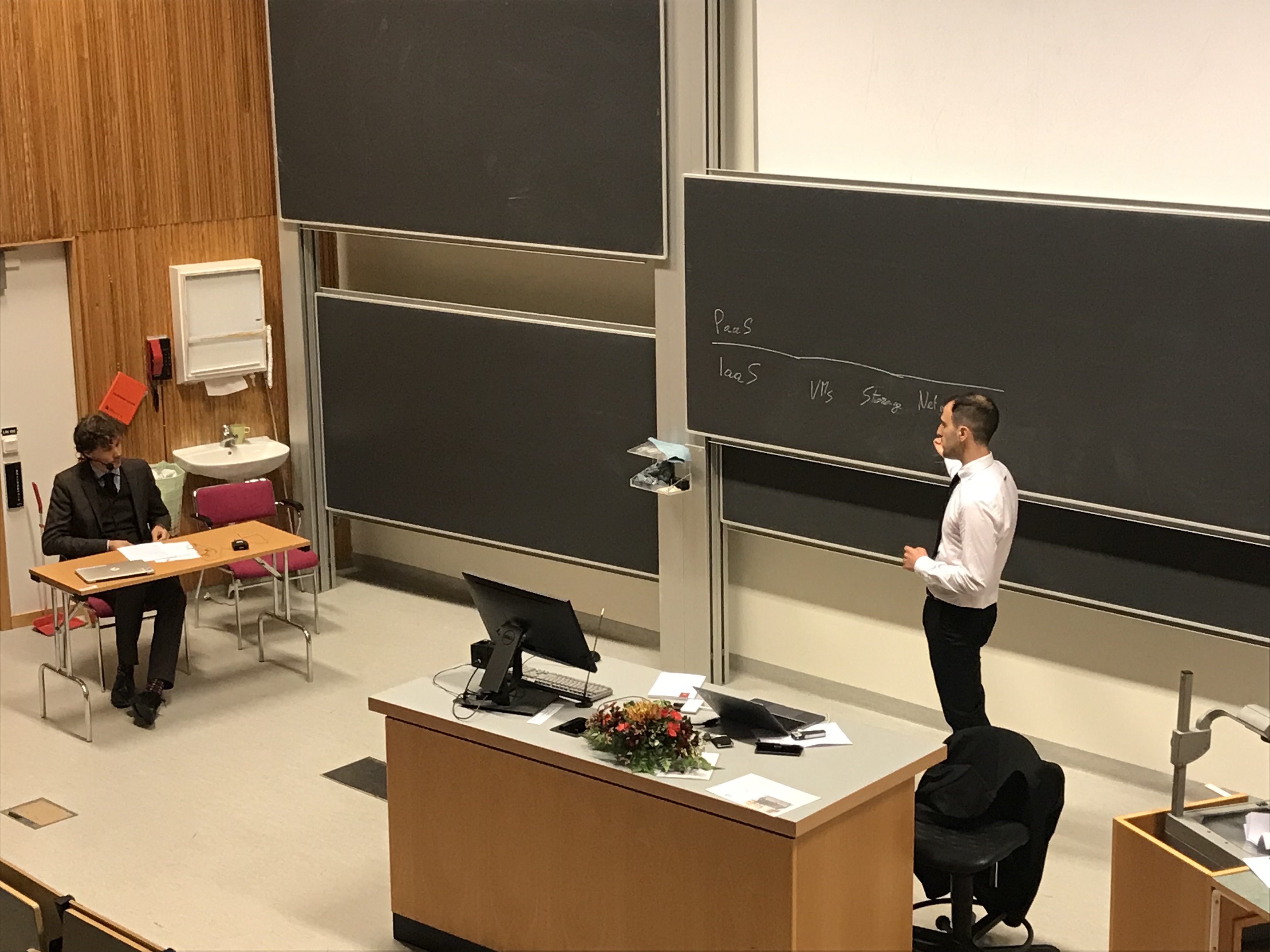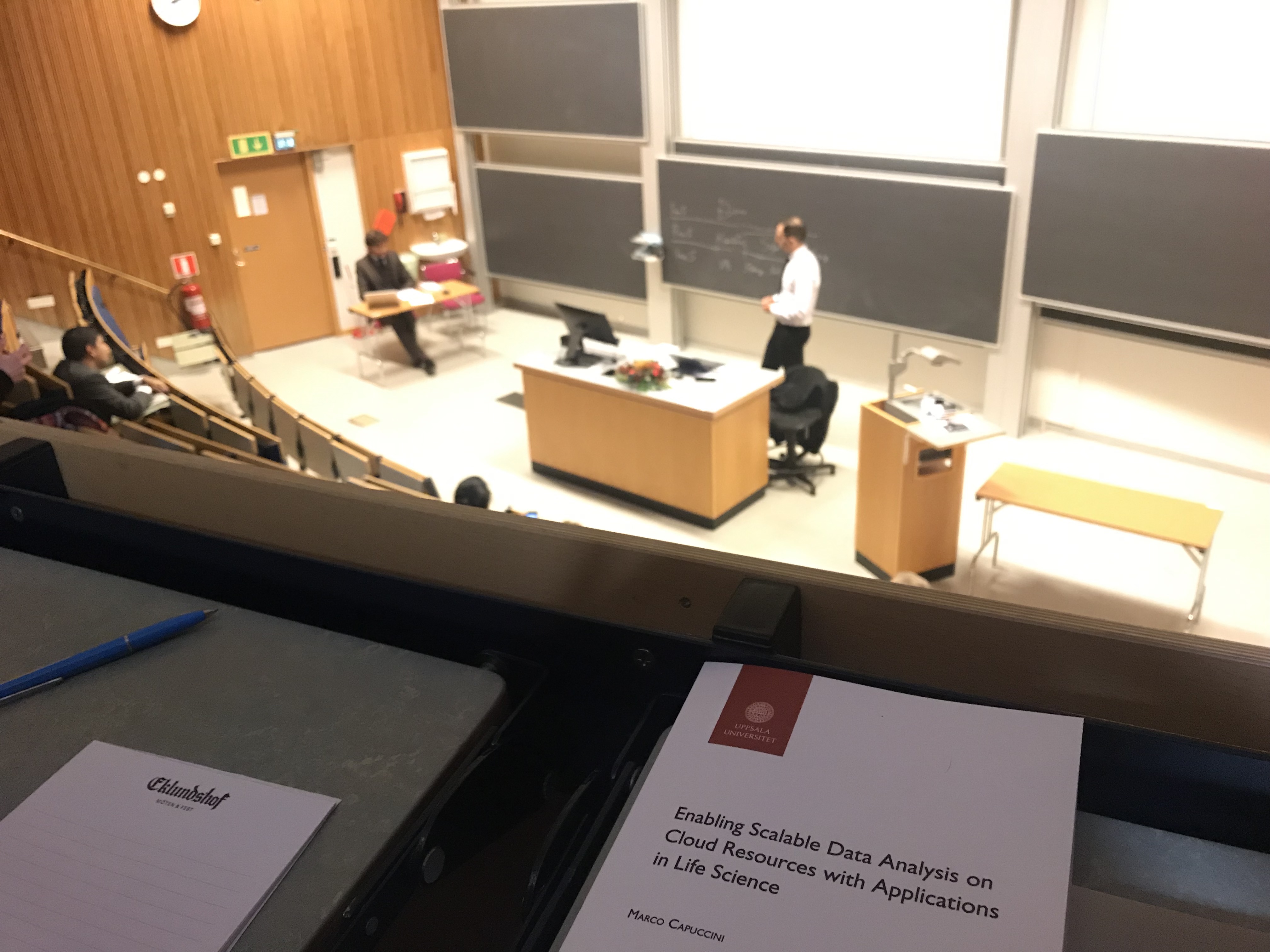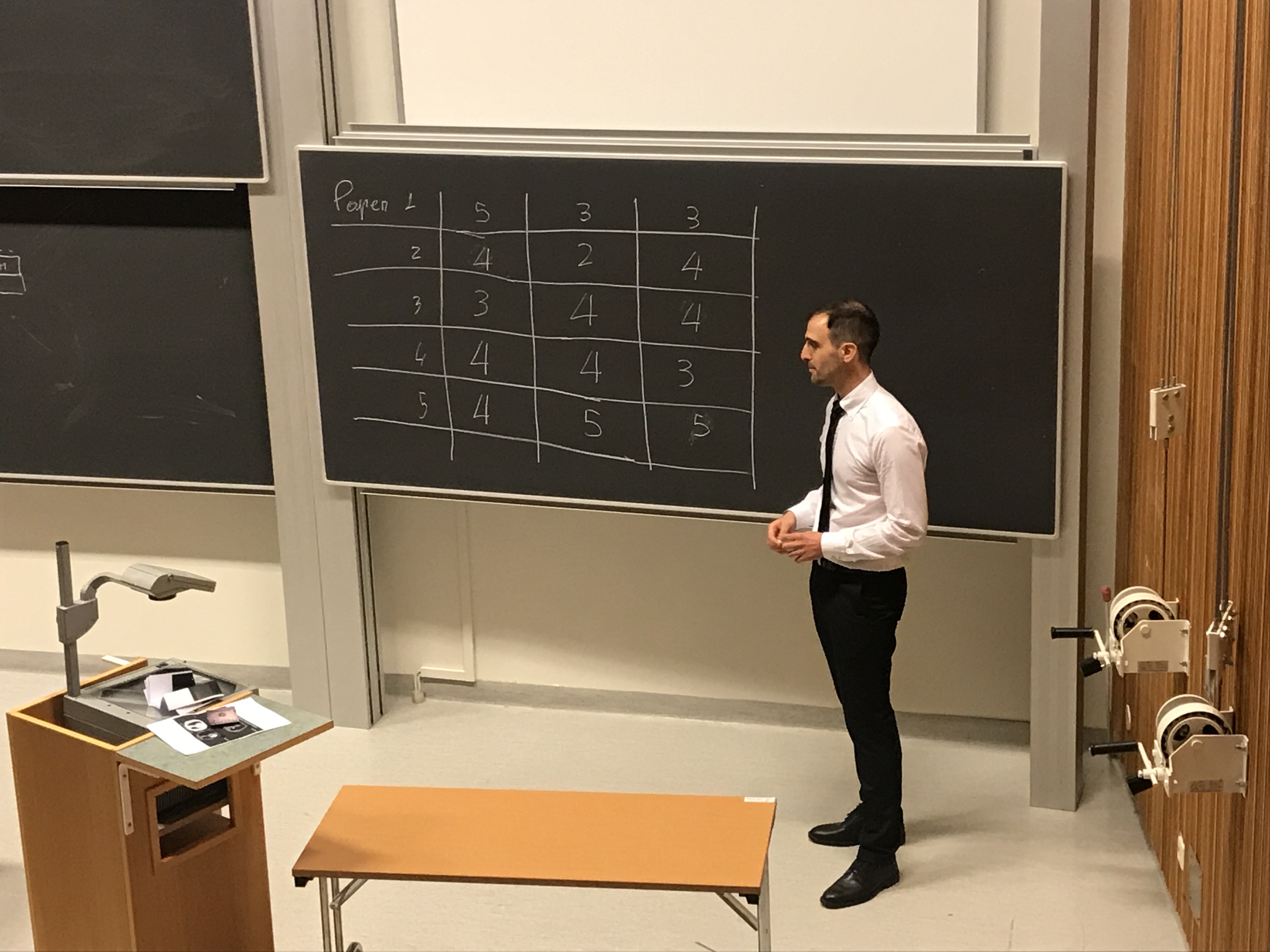Marco Capuccini successfully defended his PhD thesis: Enabling Scalable Data Analysis on Cloud Resources with Applications in Life Science
10 Oct, 2019


Today, Marco Capuccini from the group successfully defended his thesis, titled:
“Enabling Scalable Data Analysis on Cloud Resources with Applications in Life Science“
CONGRATULATIONS MARCO!
- Supervisor: Assoc Prof. Ola Spjuth, Uppsala University
- Co-supervisor: Assist. Prof. Salman Toor, Uppsala University
- Co-supervisor: Prof. Lars Carlsson, Head of AI at Stena Line
Thesis abstract
Over the past 20 years, the rise of high-throughput methods in life science has enabled research laboratories to produce massive datasets of biological interest. When dealing with this “data deluge” of modern biology researchers encounter two major challenges: first, there is a need for substantial technical skills for dealing with Big Data and; second, infrastructure procurement becomes difficult. In connection to this second challenge, the computing model and business trend that was originally popularized by Amazon under the name of cloud computing represents an interesting opportunity. Instead of buying computing infrastructure upfront, cloud providers enable the allocation and release of virtual resources on-demand. These resources are then billed with a pay-per-use pricing model and physical infrastructure management is delegated to the provider. In this thesis, we introduce a number of methods for running Big Data analyses of biological interest using cloud computing. Considerable efforts were made in enabling the application of trusted, bioinformatics software to Big Data scenarios as opposed to reimplementing the existing codebase. Further, we improve the accessibility of the technology with the aim of reducing the entry barrier for biologists. The thesis includes 5 papers. In Papers I and II, we explore the applicability of Apache Spark, one of the leading Big Data analytics platforms in cloud environments, to two drug-discovery use cases. In Paper III, we present a general method for running bioinformatics analyses on the cloud using the microservices-oriented architecture. In Paper IV, we introduce a method that combines microservices and Apache Spark with the aim of providing the best of both technologies. In Paper V, we discuss how to reduce the entry barrier for the allocation of cloud research environments. We show that all of the developed methods scale well and we provide high-level programming interfaces for improving accessibility. We have also made the developed software publicly available.
Faculty Opponent
- Assoc. Professor Johan Tordsson, Department of Computing Science, Umeå University
Examination committee
- Dr. Oxana Smirnova, Department of Physics, Lund University.
- Dr. Raazesh Sainudiin, Department of Mathematics, Uppsala University
- Dr. Maria Kjellsson, Department of Pharmaceutical Biosciences, Uppsala University




